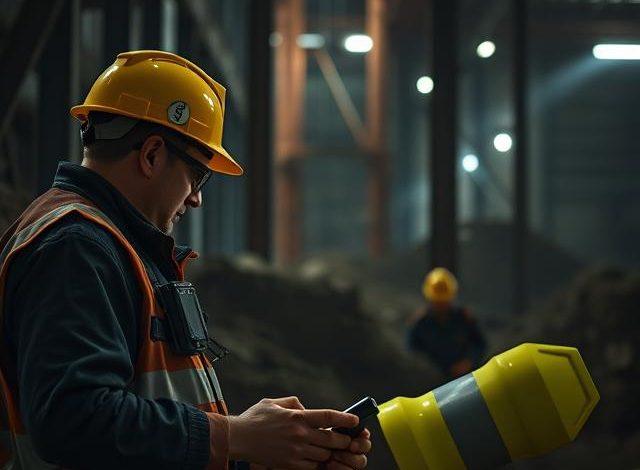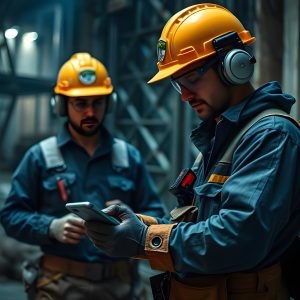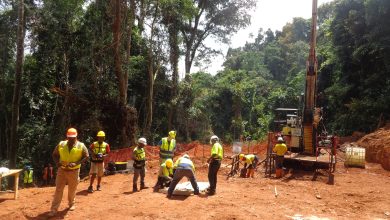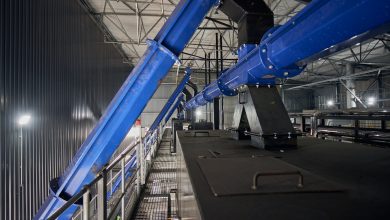
In life, there is always a trade-off — contemporary safety in mining being no exception. To ensure they are safe and focused on their tasks, mine workers are using sensor-equipped wearable technologies such as vests, smartwatches, and helmets, among others. Their whereabouts and state of health are continuously monitored. However, this hasn’t escaped the attention of human rights bodies, who raise concerns about the infringement of individuals’ rights, with personal data potentially falling into the hands of bad actors.
By Jimmy Swira
There is more at stake in contemporary mining. Pertinent issues (not in order of importance) include:
- The health and safety hazards employees face have escalated
- Increased activity means more pollution (emissions)
- Mines are dealing with increased operating costs
- At the same time, they are obligated to increase the bottom line
If that is not enough, compounding matters, regulators or related bodies are introducing new regulations to enhance compliance, enabling mining operations to mitigate safety and environmental risks. Is there a more compelling business case for the adoption of suitable technologies to cope with these myriad issues?
Wearable Technologies
Accordingly, mines and other industries are exploring means to help them manage these challenges. Wearable technologies (wearables), which are integrated with sensors and the IoT (Internet of Things), have emerged as one of the effective options they can utilise. The real-time data gathered is relayed to control centres, where the appropriate course of action is determined.
Based on information Mining Business Africa has sourced from leading suppliers and the Wearable Devices Market Insights, a global market report on wearables, three key aspects emerge: the increasing scope of wearables, the needs they are addressing, and the benefits they bring (results from industries adopting them increasingly prove their relevance).

Scope of Wearables
Devices that are used widely in mining operations include smart helmets, smart vests, smartwatches, wearable sensors, smart glasses, and helmet-mounted glasses and sensors. With breakthroughs in research and development, more are certain to be added to the list.
Using sensors, wearables can perform tasks in rugged environments that were previously thought to be the stuff of science fiction. It is worth appreciating what some of them — smart helmets, smart glasses, and smart vests — can do.
Smart helmets detect hazardous gases like methane or carbon monoxide. They alert workers to the dangers these gases pose in their environments.
Their communication systems enable real-time coordination, and they can monitor vital signs, such as heart rate, to manage fatigue and track environmental risks.
Incorporating RFID tags, smart vests can be used for real-time location tracking during emergencies, providing supervisors with precise information about workers’ locations. In addition, the sensors in the vests monitor dust, noise exposure, or temperature. In this way, they reduce health risks like silicosis with respect to dust exposure.
Smartwatches monitor workers for signs of danger, onset of fatigue, or injury during a task, allowing appropriate instant interventions. In the event of fatigue, the intervention could be rest breaks.
Smart glasses offer augmented reality (AR) for hands-free access to equipment schematics or maintenance instructions.
Benefits
The list of capabilities of each set of wearables is long, but vitally, by adopting them, mining operations benefit mainly in the following ways:
- Enhanced safety
By facilitating communication between workers and supervisors, wearables can improve safety and coordination. For instance, when hazards are identified, necessary and timely interventions — enabled by track-and-trace features — can take workers out of harm’s way, such as removing them from a fire or a caving site before the situation worsens. - Prioritising worker health
By monitoring fatigue, body temperature, and potential carcinogenic exposure to dust or fumes, among other factors, wearables can help make workers’ health a top priority. - Improved productivity
Tracking worker whereabouts and behaviour can ensure that workers stay focused on their tasks, enabling them to meet their targets. Improved communication can provide access to actionable real-time data for making critical decisions, improving efficiency, and resulting in increased productivity. This, together with productivity gains from other areas, can increase revenue. - Compliance with regulations
With reliable, accurate data allowing for informed decisions in environmental management (like reducing emissions), and health and safety, a mining operation can comply with regulations.
‘Big Brother is Watching’ Fears
Immersed in excitement over the incredible potential of wearables, it is easy to overlook their impact on employees and individuals’ rights. This issue was raised and discussed at length during a Human Rights Dialogue hosted by the Minerals Council South Africa, in conjunction with Anglo American and the Global Compact Network South Africa. It was facilitated by Synergy Global Consulting in 2022, which Mining Business Africa attended. And it is as relevant as ever, if not more so.
Coincidentally, the issue of individual surveillance resonates with fears depicted in George Orwell’s widely referenced dystopian novel, 1984. How much of their privacy can people give away for the convenience of wearables?
During the discussion, Anglo American’s International Government and Sustainability Relations Group Head, Froydis Cameron-Johansson, raised the alarm about the serious implications of the growing use of surveillance technologies, drones, and wearables on employees’ and individuals’ rights to privacy. She particularly referenced the role of track-and-trace wearables to monitor employee behaviour and record health-related data. She lamented that civil society and the private sector seemed to be oblivious to the issue. And, it must be added, they still are.
“Everybody has a phone. You’re going onto an app; it asks you for all this personal information that you probably wouldn’t ever give a stranger, except you’re just sending it into the Metaverse, so to speak.”
“Where does the buck stop?” a charged member of the audience asked. What if the information is exploited by bad actors with little regard for human rights?
Human rights bodies have echoed this concern, drawing attention to the blurring of lines between privacy and unfettered access to information and monitoring of employee whereabouts.
Legal Safeguards and Responsible Data Use
Hopefully, sanity will prevail, and legal safeguards will be put in place by regulators in respective countries, including in Africa, to ensure that workers’ data is used responsibly. Without question, while legal grey areas linger, the benefits that wearables bring to industries like mining are worth highlighting.
Another reality is that, for all the convenience they may offer, these devices suffer damage in harsh conditions — like every other product used in mining. Hopefully, relevant OEMs will address this and improve the robustness of their products.
Here to Stay
Whatever surveillance fears persist, wearables are here to stay and will only evolve. The global IoT wearables market, including South Africa, is expected to grow at a compound annual growth rate (CAGR) of 20.8% from 2025 to 2030 (Grand View Research).
Which is better: no surveillance and a high risk of accidents, or surveillance with a low risk of accidents?






